Mike W. Barr’s Batman comics – particularly his work in the 1980s – tend to have a deeply recognizable authorial voice, for two very distinct reasons. On the one hand, you’d be hard-pressed to find a modern Batman writer able to so skilfully capture an old school sense of fun and wonder. On the other hand, Barr writes one of the cruelest versions of the Dark Knight, one with very ambiguous regard for human life.
Under Barr – and not many others – Batman has often killed criminals, or at least casually let them die. Noted Batmanologist Chris Sims has repeatedly pointed out that thanks to Barr the Dark Knight has used a thug as a human shield and once cold-bloodedly threw Ra’s al Ghul against his own space death rays. And, of course, in the first pages of Son of the Demon, Batman not only sends three henchmen to their deaths in a helicopter crash, he also pitilessly lets a guy take an acid bath:
In Batman Annual #9, the terrorist group Black Heart Liberation Army gets upset that bank robbers are using the group’s badass name, arguing that ‘while liberating funds from capitalist lackey money-lenders is an excellent means of exemplifying the class struggle for the masses,’ this should not be left to ‘crude thugs who only want to enter the system…’ When the terrorists confront the robbers, Batman very deliberately uses a party favor to trick them all into shooting and blowing each other up!
Although less intentionally, there is also that time the Caped Crusader scared a man to death:
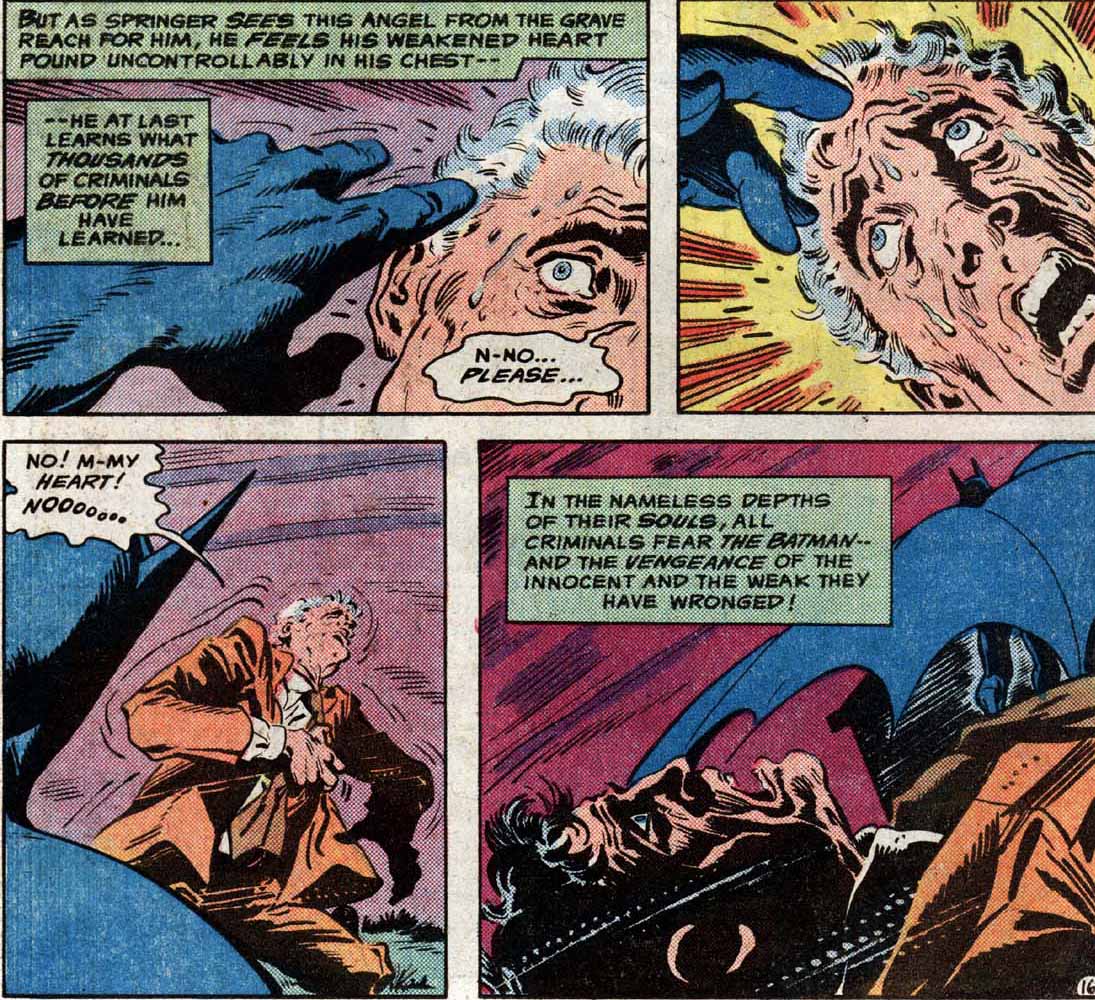 The Brave and the Bold #169
The Brave and the Bold #169
…I mean, those two times:
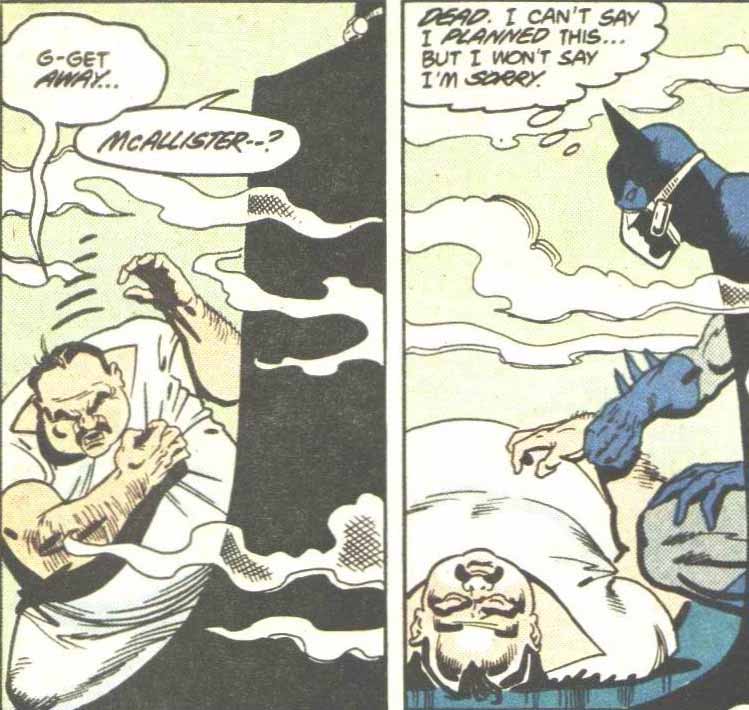 Detective Comics #579
Detective Comics #579
Likewise thanks to Mike W. Barr, on the first arc of Batman and the Outsiders the villain is thrown off a castle to be dismembered by an angry mob in front of an approving Dark Knight:
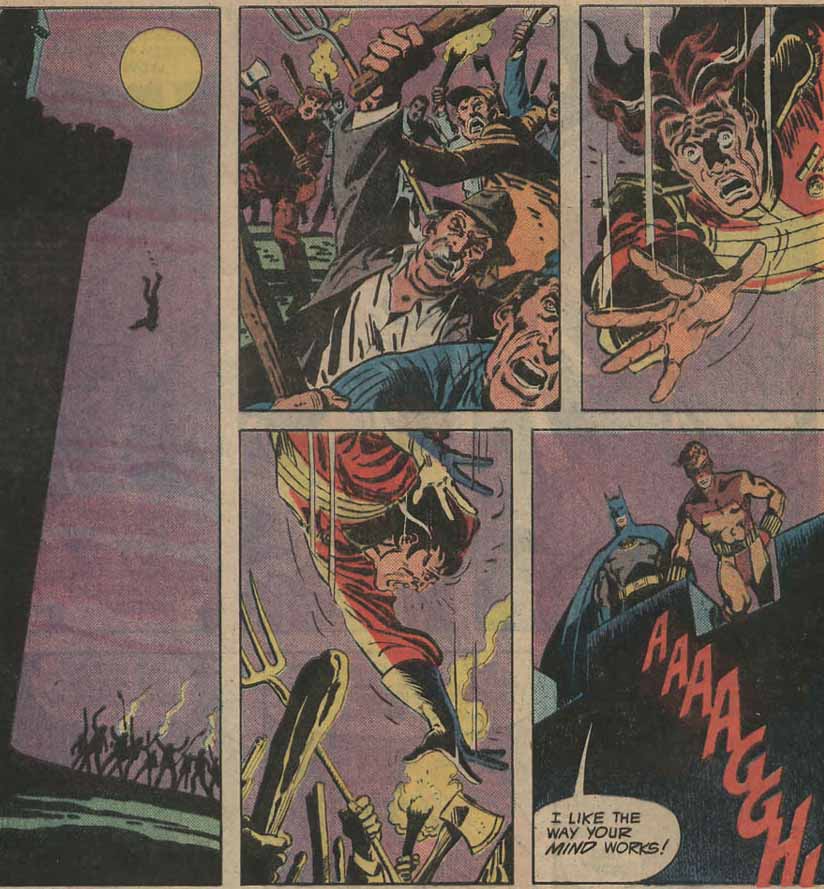 Batman and the Outsiders #2
Batman and the Outsiders #2
In fact, in that series Batman comes across as especially callous, often willing to throw his teammates to the wolves… not to mention shooting a bunch of Kobra agents:
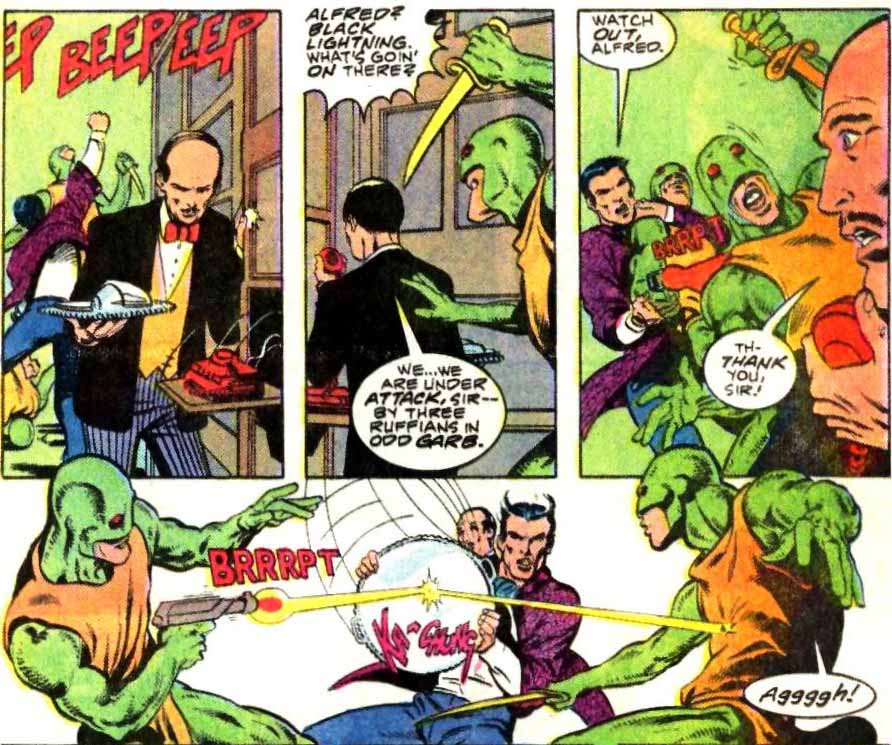 Batman and the Outsiders #26
Batman and the Outsiders #26
Oh well, at least he draws the line at fighting babies:
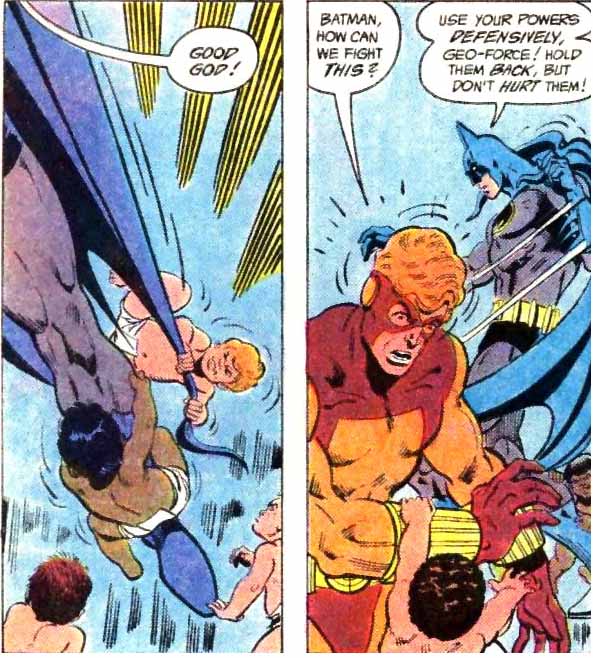 Batman and the Outsiders #8
Batman and the Outsiders #8
Seriously, how bloodthirsty is Mike W. Barr’s Batman? This is how he conjures up the spirit of Christmas:
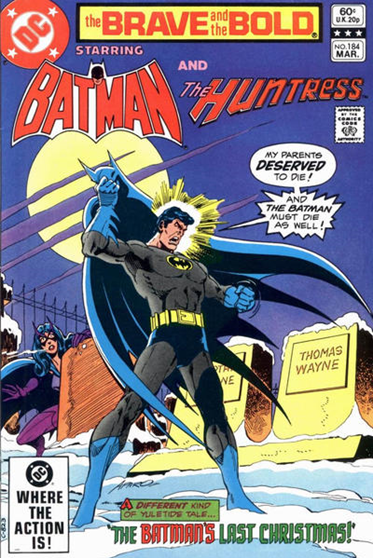 The Brave and the Bold #184
The Brave and the Bold #184
As if all this was not out of character enough, Barr also scripted the infamous ‘Year Two’ storyline, where Batman starts packing a gun (the one that killed his parents, no less) and teams up with Joe Chill (only the man who pulled the trigger, you know). Yeah, it’s as bad as it sounds.
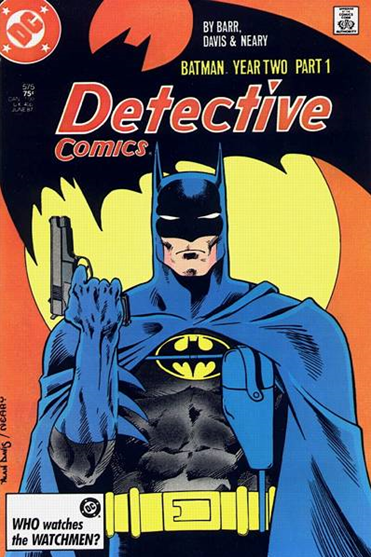 Detective Comics #575
Detective Comics #575
You’d think Mike Barr has no idea what a Batman comic should be like. And yet, he totally does.
For one thing, Barr has clearly read one of the most Bat-defining tales of all time, ‘There is no hope in Crime Alley!,’ which breathed life into the neighborhood where the Waynes were shot and into Leslie Thompkins, the woman who consoled a recently orphaned Bruce. This story was an unmistakable source for two of Barr’s most famous comics: ‘The Player on the Other Side!’ and Detective Comics #574. Its influence is everywhere, from the opening description of Park Row (which both issues reproduce word for word), to Leslie Thompkins’ presence, to the riff on the classic line ‘my beginning… and my probable end’ (which even serves as title for Detective Comics #574).
‘The Player on the Other Side!’ is particularly cool. It tells the story of a kid who saw his parents killed by the police on the same day that Bruce’s parents were gunned down by Joe Chill, and grew up to be an avenging cop-killer known as The Wrath – the symmetrical opposite to Batman. A similar idea has since been used on other villains (including Bane and Prometheus, not to mention a recent reboot of the Wrath himself), but Barr really takes the doppelgänger notion in interesting directions. And so do artists Michael Golden and Mike DeCarlo, who pull off a costume based around the ‘W’ in Wrath that smoothly parallels Batman’s cowl:
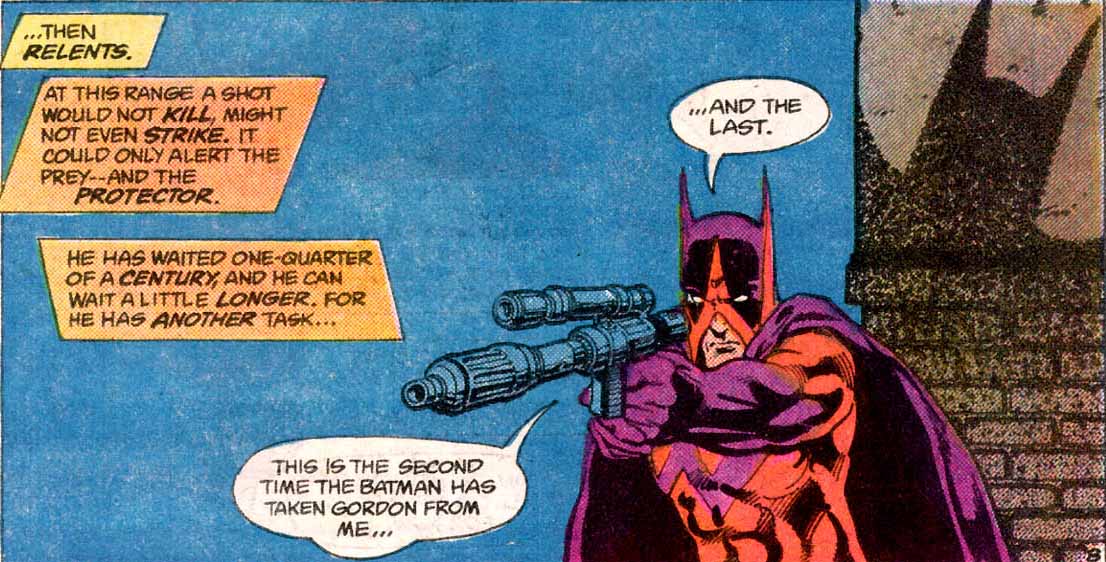 Batman Special #1
Batman Special #1
Drawing on the homonymous works by Aldous Huxley, Manfred B. Lee, and Frederic Dannay (the latter two best known as Ellery Queen), ‘The Player on the Other Side!’ uses the mirror concept to explore what ultimately defines Batman. Notably, the comic illustrates the importance of the supporting cast (Gordon, Alfred, Leslie) in how the Dark Knight eventually turned out. Kudos also to Tony Bedard for having produced a sequel (in Batman Confidential #13-16) that satisfyingly develops this comic’s themes and ramifications.
The truth is that, for each instance of preposterous characterization and bold choices, you’ll probably be able to find at least one corresponding moment in which Mike W. Barr brilliantly nails the Caped Crusader, such as this great sequence after Batman gets his heart broken:
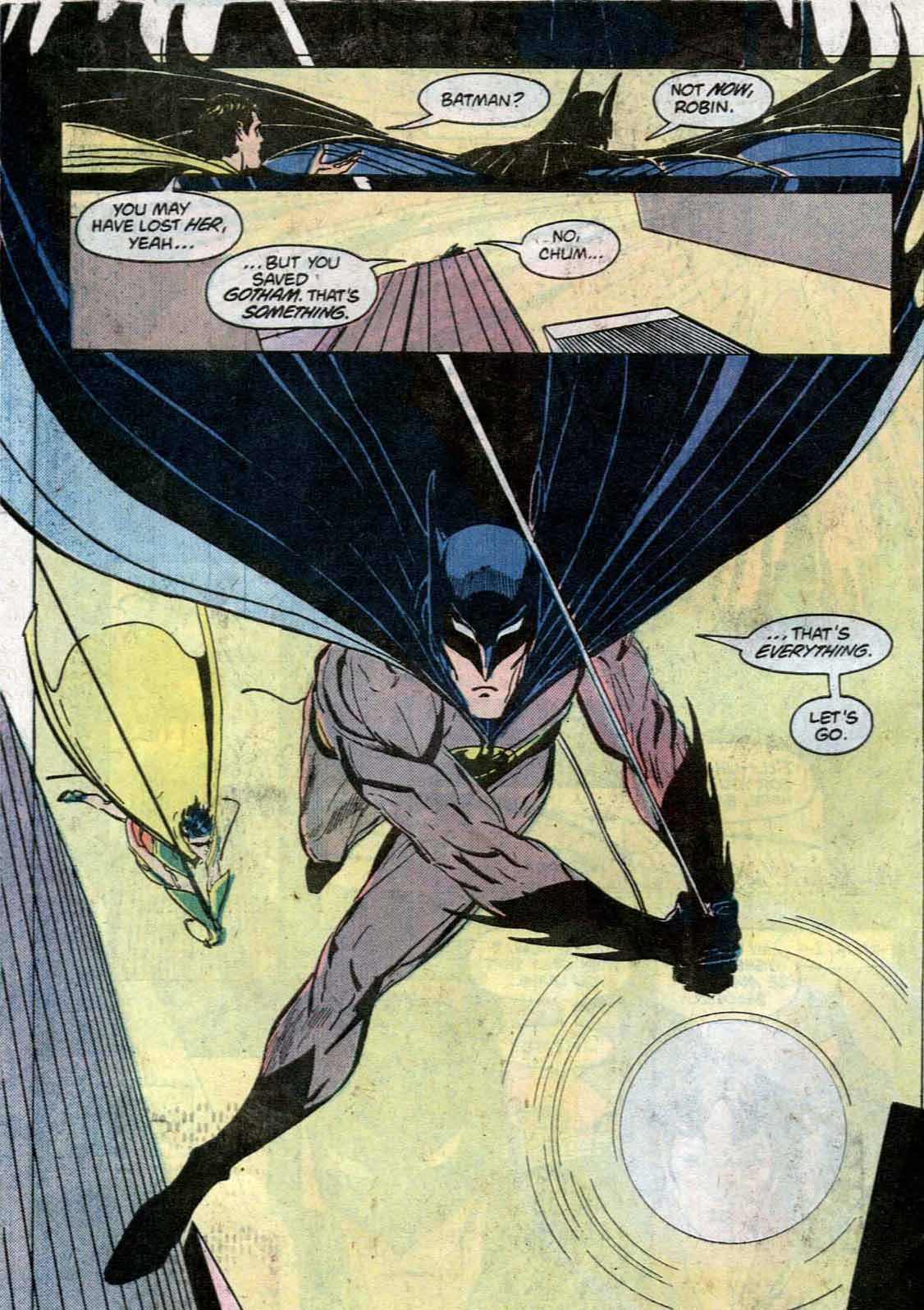 Batman Annual #8
Batman Annual #8
You’ll notice Batman calls Robin ‘chum.’ That happens a lot in these comics. Indeed, as brutal as his Dark Knight can be, Mike Barr is not averse to the occasional cheesy exchange between the Dynamic Duo. Similarly, he respects such longstanding Batman traditions as kicks in the face and gratuitous, groan-inducing puns:
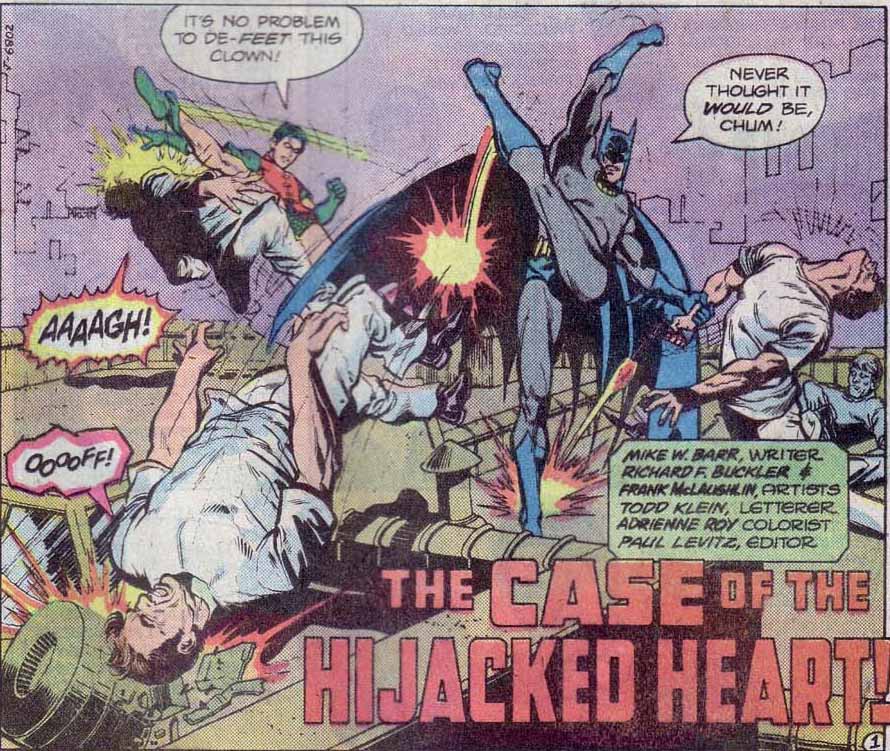 Batman #329
Batman #329
Moreover, Barr shows keen awareness of how the best Batman comics make use of the character’s intellectual skills. Thus, from 8-page backup stories in the main series, to full-issue team-ups with spandex-wearing superheroes from various dimensions in The Brave and the Bold, to large-scale brink-of-world-destruction sagas like Son of the Demon, Barr is likely to work a whodunit into the plot… what’s more, it’s usually a fair-play murder mystery, often involving the victim using her/his last gesture to provide a convoluted clue about the killer’s identity, Ellery Queen’s influence once again shining through (only Martin Pasko’s ‘A Clue Before Dying!’ may give Barr a run for his money as the geekiest Bat-homage to Ellery Queen). Mike Barr, it should be noted, is an admitted fan of the genre, having even penned the neat fair-play mystery series The MAZE Agency.
As long time fans know, another way to show off the Caped Crusader’s ingenuity and intellectual prowess is by challenging him with an elaborate deathtrap, through the kind of plot contrivance so hilariously mocked in the first Austin Powers movie. And boy can you count on Barr to deliver on this front as well:
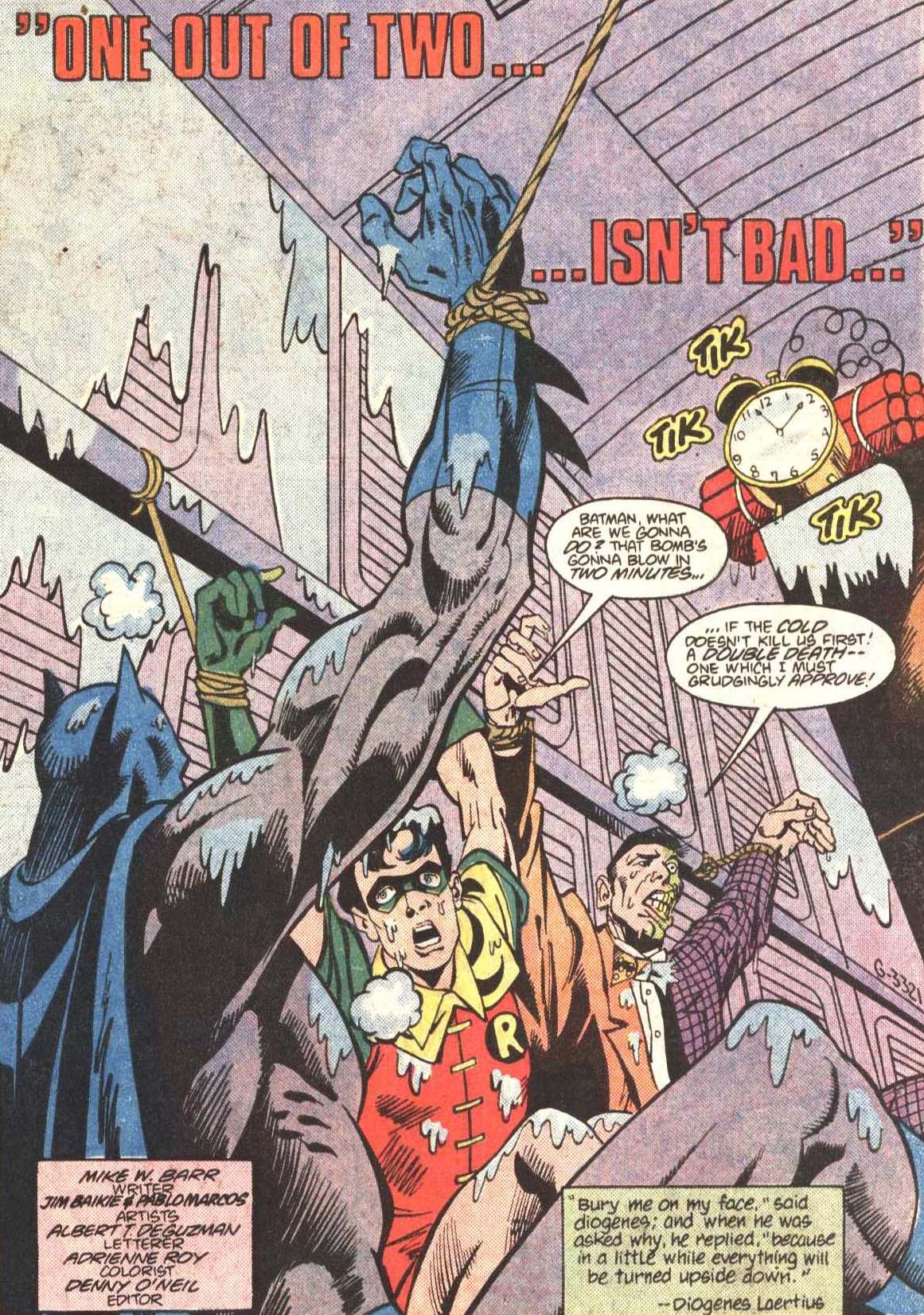 Detective Comics #581
Detective Comics #581
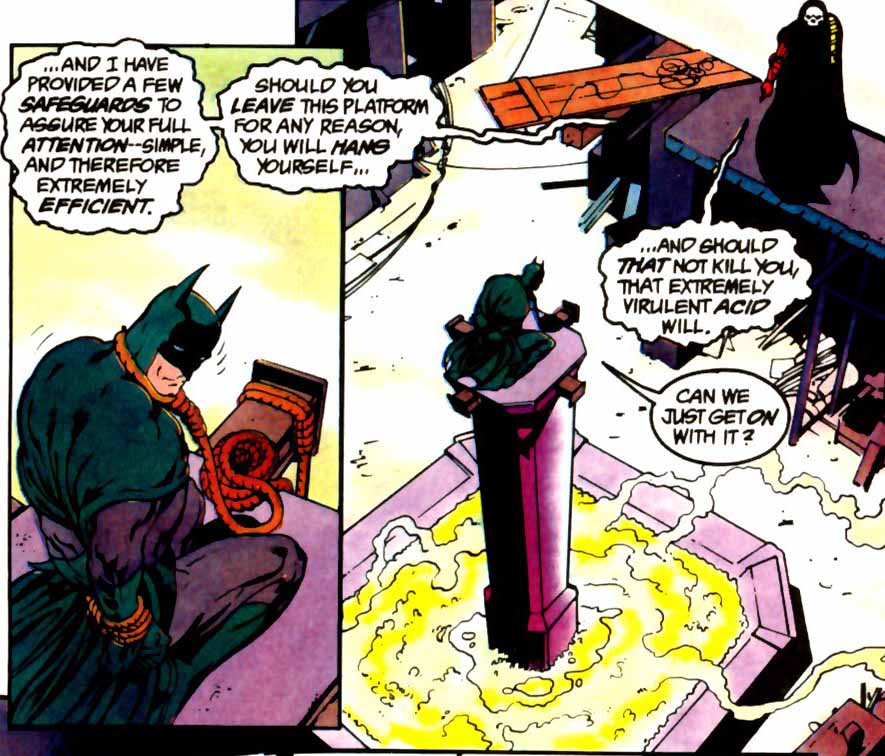 Full Circle
Full Circle
As Mike W. Barr’s affinity for deathtraps suggests, he is no stranger to Silver Age storytelling. Indeed, his most well-regarded Batman work is a throwback to that era. In the mid-1980s, at a time when the Dark Knight was at his grimmest and grittiest, Barr managed to write a colorful run of Detective Comics with a peppy, wisecracking Robin (Jason Todd) and amusing set pieces like a fight among giant billiard balls. His artists even paid homage to the kind of title splash pages so in vogue in previous decades, featuring surrealist scenes that did not show up in the actual story but nevertheless conveyed the main themes:
Detective Comics #571, 572, 573, 579
As much praise as the nostalgic elements of this run have received over the years, one aspect which doesn’t always get enough credit is Barr’s postmodern twists on traditional villains, elevating their pathological obsessions to a symbolic level. For example, instead of stealing hats or using hats to commit crimes as he usually did, this version of the Mad Hatter robs institutions evocative of idiomatic expressions about hats (such as the Gotham Sports Arena, because when a player scores three goals in one game it’s called a ‘hat trick’). And Two-Face, whose crimes typically revolve around the number two, is now apparently so fascinated by duality that he starts attacking anything that duplicates reality, such as impressionists, sculptors, and even a mirror factory!
Less renowned, but even closer to emulating Batman’s past era, is the final issue of The Brave and the Bold, titled ‘Smell of Brimstone, Stench of Death!’ Here, Barr goes into full pastiche mode. The first half of the story is set on Earth-2 (where Batman’s earliest adventures took place, in the 1940s and 1950s), pitting the Caped Crusader against a Satan-themed villain called Brimstone. Barr’s writing perfectly captures the tone of a more innocent age, from the playful pun-based clues, to Commissioner Gordon’s underwritten role, to the buildings decorated with giant props:
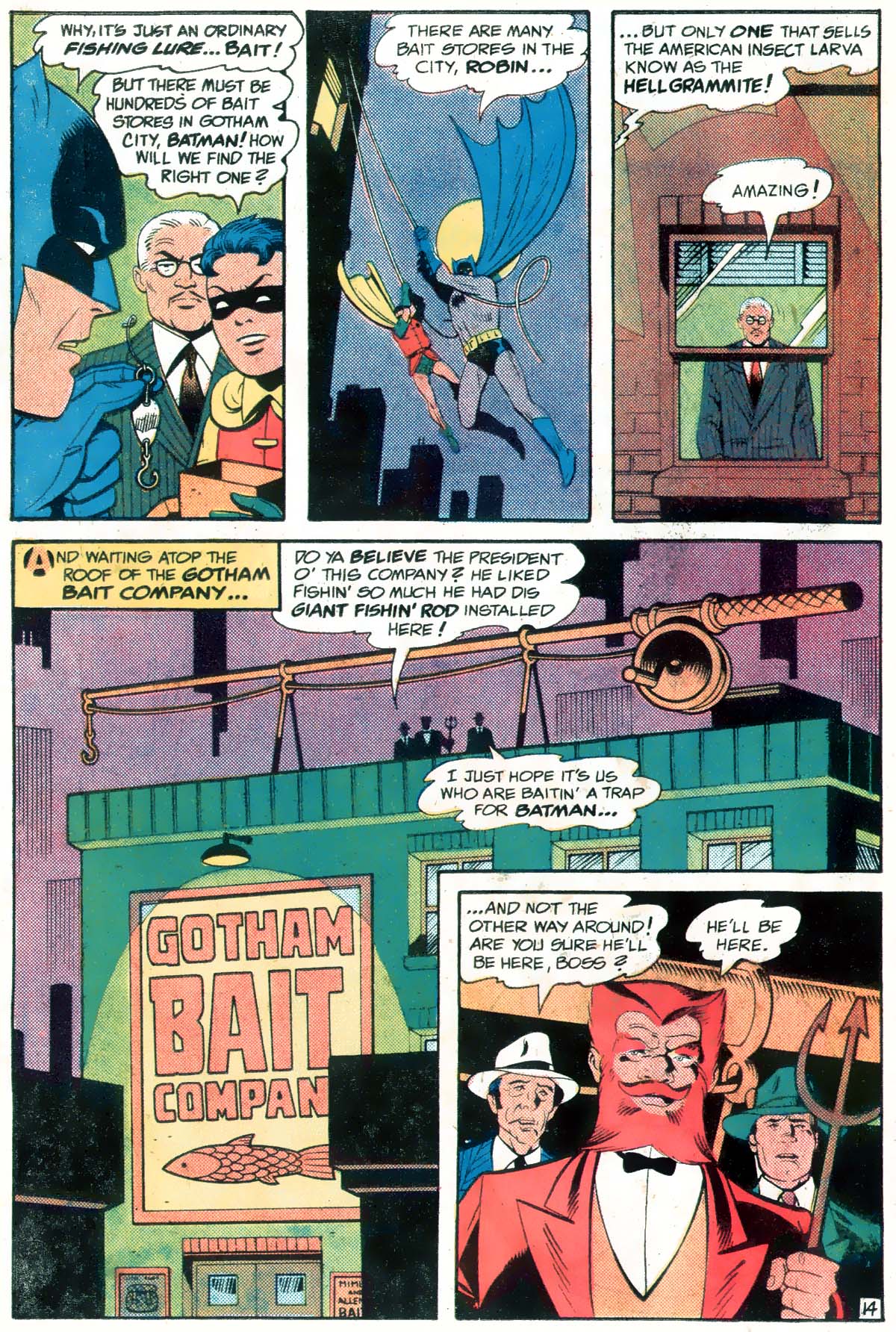 The Brave and the Bold #200
The Brave and the Bold #200
Much of the merit goes to artist Dave Gibbons, of course, as well as to Gary Martin, who inked this Earth-2 sequence. Yet what makes the comic awesome is that in the second part of the story Brimstone travels to the current reality (of 1983, when the comic came out), giving Barr the opportunity to tackle the near-apocalyptic feel of that period, in a tale of street gangs, racial riots, and social breakdown. Like the first part, this doesn’t come across as a spoof so much as a straightforward tale written with a different sensibility. Indeed, this section of the issue could have easily belonged to any mainstream comic of the time (including those penned by Barr). By pairing it with the Earth-2 pastiche, though, Mike W. Barr gives us a wonderful viewpoint into the evolution of Batman storytelling. And again Gibbons, who has yet to meet a challenge he cannot match, poignantly illustrates this contrast by delivering some totally ’80s art:
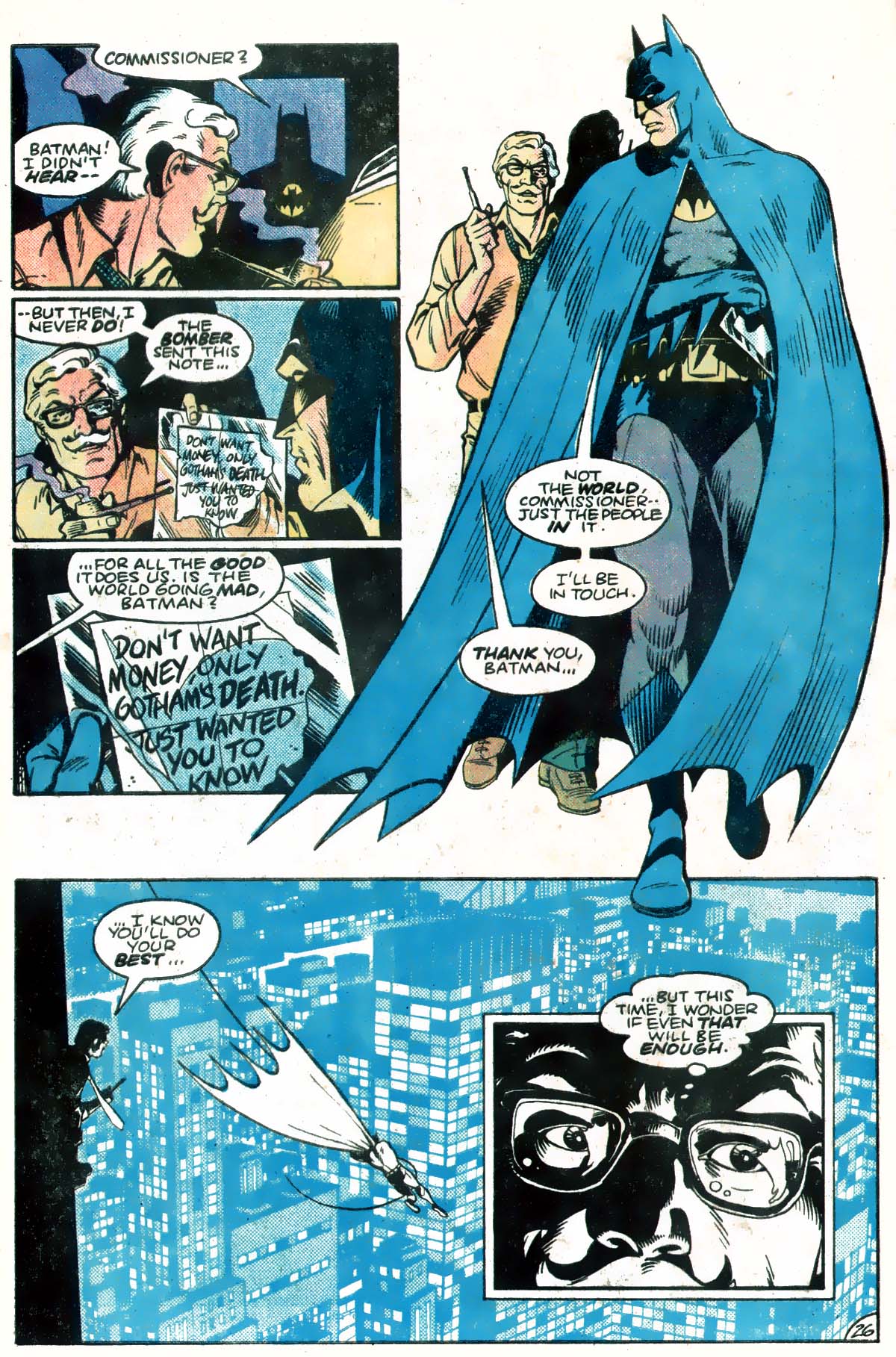 The issue’s format also allows Barr to pull an ingenious twist on his passion for deathtrap contraptions, as Brimstone uses the same trap twice, one for each version of Batman – having updated the device in order to remove the loophole that allowed the Caped Crusader to escape the first time around, the villain forces our hero to think of a second way out! It is such a clever idea that Barr would go on to use it again and again, most recently in the Legends of the Dark Knight story ‘The Elements of Crime.’
The issue’s format also allows Barr to pull an ingenious twist on his passion for deathtrap contraptions, as Brimstone uses the same trap twice, one for each version of Batman – having updated the device in order to remove the loophole that allowed the Caped Crusader to escape the first time around, the villain forces our hero to think of a second way out! It is such a clever idea that Barr would go on to use it again and again, most recently in the Legends of the Dark Knight story ‘The Elements of Crime.’
His best take on it, though, is in the amazing Two Face Strikes Twice!, which basically repeats the formula of ‘Smell of Brimstone, Stench of Death!’ ten years later. Once again, half the tale is written like a Golden Age comic about the Dynamic Duo (this time suitably illustrated by Joe Staton) and the other half like an issue from the characters’ contemporary incarnation, complete with Tim Drake taking over Dick Grayson’s role as Robin (and with modern, fully-painted art by Daerick Gross). What makes this tale stand out is that now the villain is Two-Face, so the whole comic is designed to evoke dualism and symmetry, the dialogue’s double entendres and the dichotomous yet complementary art styles reflecting the villain’s split personality.
Two-Face Strikes Twice! #1
These are not the only comics to get mileage out of imitating past approaches to Batman. Michael Gilbert did a fun issue of Legends of the Dark Knight with people stuck in an elevator telling each other about their encounters with the Caped Crusader, each story aping classic artists such as Bob Kane and Neal Adams. To celebrate Batman #600, Ed Brubaker pretended to have found a bunch of previously unpublished stories, which also turned out to be recreations of the style of past publications. More memorably, ‘Night on Earth,’ a crossover with the brilliant metafictional series Planetary, features batmen from multiple dimensions, including the versions from the 1960s TV show and from The Dark Knight Returns.
Even the cartoon shows have had fun with the concept. The Batman: The Animated Series episode ‘Legends of the Dark Knight’ pays direct homage to the works of Dick Sprang and Frank Miller. The Brave and the Bold episode ‘Bat-Mite Presents: Batman’s Strangest Cases’ includes spot-on pastiches of Mad Magazine’s ‘Bat Boy and Rubin,’ Jiro Kuwata’s Bat-Manga, and the Batman/Scooby-Doo crossovers of the 1970s (guest-starring Weird Al Yankovic).
Most of these are clever and easy to appreciate, but they don’t always hold up as exciting stories in themselves nearly as well as Mike W. Barr’s. The man remains a master of retro-infused storytelling, perhaps because it is only in these tales combining old school playfulness and contemporary grittiness that Barr can truly bring together his very conflicting takes on the Dark Knight.

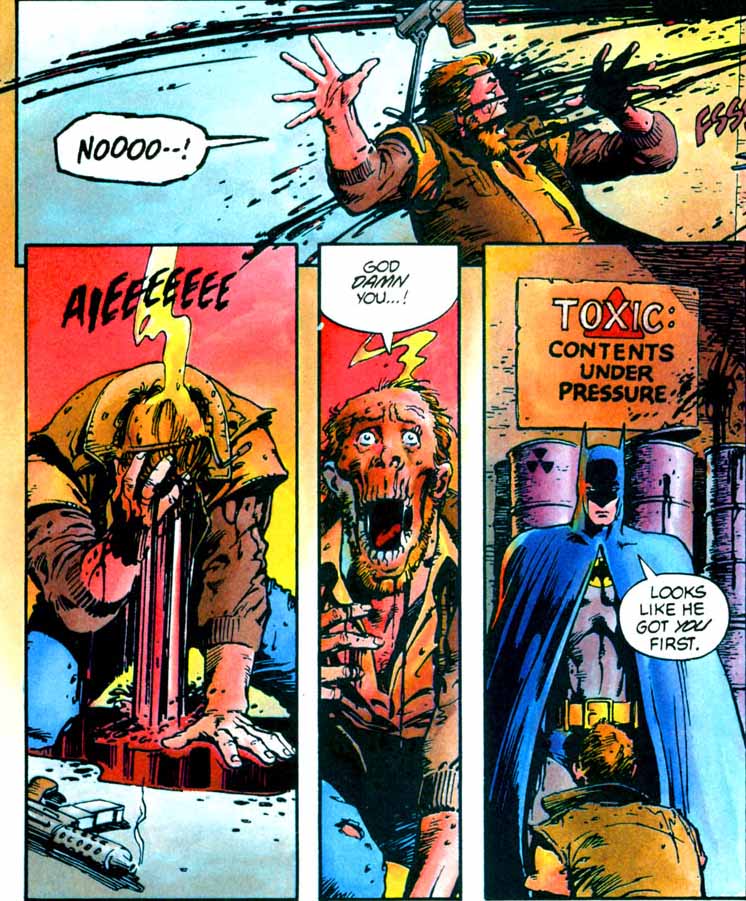

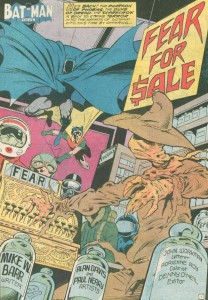
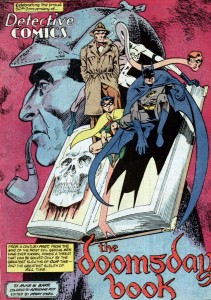
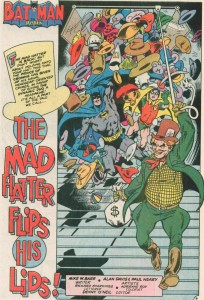
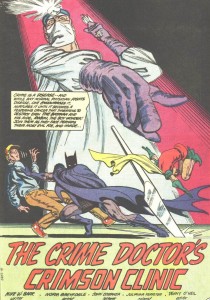
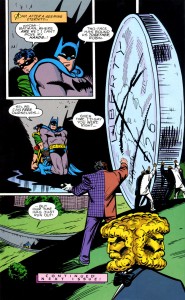
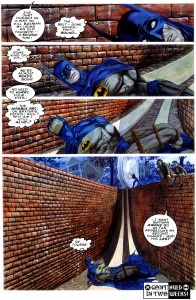
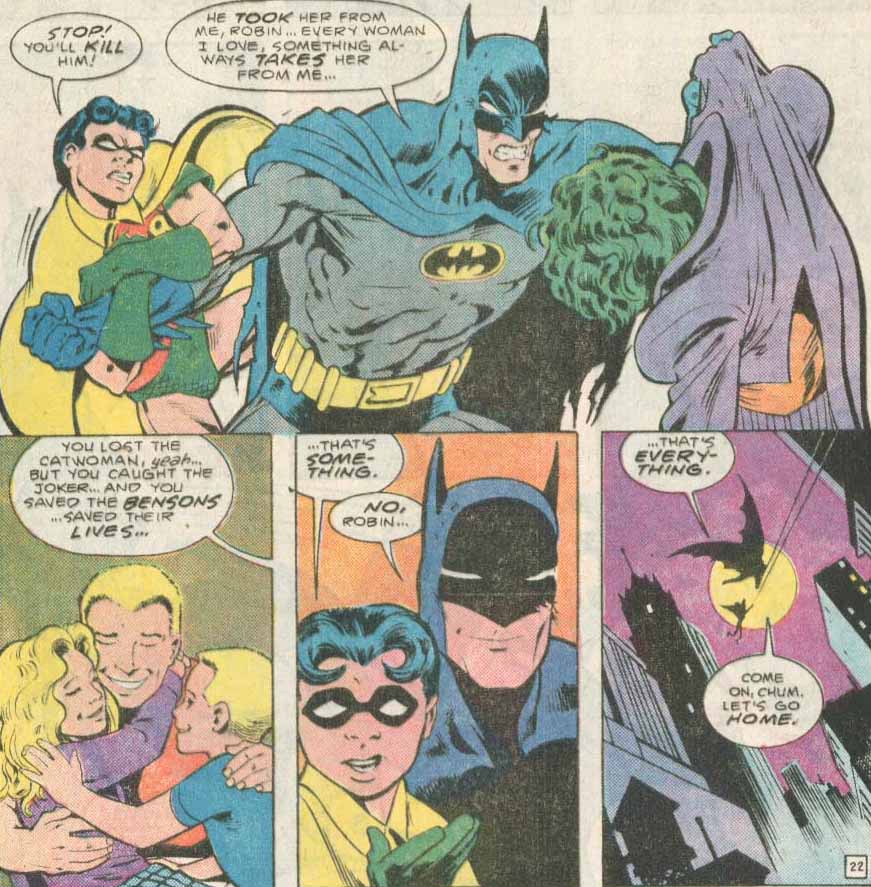
Yeah, when Barr’s good, he’s fucking amazing – one of the biggest contenders for the Platonic Batman Writer, in my book. It helps when there’s a master like Alan Davis on art, but it’s not really a prerequisite – hell, Barr may well have been the first writer since the Golden Age to really make Batman WORTHY of the Detective title (in more ways than one).
But when he’s not, well… it’s at least half the reason I crinkle my nose at all the people who bag on Frank Miller, when Barr’s Batman can be several magnitudes WORSE on a bad day. It wasn’t Miller’s Batman, was it, who straight-up taunted a stoolie with the possibility of prison rape?
This is just as L.Simonson’s – Dan Jurgens Superman comics is simply a matter of taking character back into his original roots (i.e. making him more HUMAN and put him in difficult situations, rather than carttony ideal ones with easy bail outs) way they were CREATED and meant to be before all editor and comic code nonsense, while at the same time blending him with a more later “humanism”, restrain and self-awareness.
I personally prefer this A LOT more towards Injustice or Kingdom Come “outcomes”.
No, those superheroes won’t stop being superheroes because one of two shortcomings, no they won’t go “down rabbit hole” after taking life, or will stand still so very dangerous and ustoppable person will continue to walk and kill people so their morale won’t get compromised. This is actually what makes them best, they roll with the punches and thriving to make tomorrow better than yesterday.
It pains me to see when even people from official DC comics will rather not consider these sides of those characters , or even not aware of them in the first place. This is A LOT more important than mentioning something lke All-Star Superman’s single panel out-of-context with “There is always a way” and claiming that you know everything about character, they are a lot more complicated than that, hell even within ASS itself.
It is not without cause that I have labelled Mike W. Barr an Enemy of Society: nearly every single character he has created is a cringe-induces embarrassment to name, let alone discuss. And yet…
In that last story you excerpted it was Mike W. Barr who knew that Catwoman needed to be fixed, knew exactly how to do, and accomplished it with a story that was somehow both campy and sobering. And I remember cheering out loud when I read it.